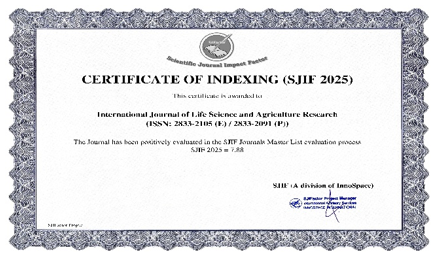Dedication to the Community on Cultivation of Corn Plants in the Village of Taen Terong II Riung District of Ngada Regency
DOI:
https://doi.org/10.55677/ijlsar/V03I8Y2024-07Keywords:
Devotion_to_the_community; Taen_Terong_II; Cultivation; Corn.Abstract
The purpose of this project is to improve the productivity of the cultivation of corn crops in Taen Terong II village, Riung district, and Ngada district. By using the Student Creativity Program (PKM), it is done to identify the right cultivation techniques in accordance with the environmental conditions and local potential that exists in the village. Through a participatory approach, the village community will be involved in the activities of this PKM to ensure the sustainability of the implementation of the proposed cultivation techniques. The methods used include field surveys, interviews with farmers, direct observations of farmland, and data analysis. With this research, the community of Taen Terong II will be able to acquire new knowledge and skills in the cultivation of corn that can improve crop yields and farmers' well-being. In addition, the outcome of this PKM is also expected to be a benchmark for the parties involved in the development of agriculture in the region. Thus, this PKM program is expected to make a positive contribution to the development of the cultivation of corn crops in Taen Terong Village II, Riung District, and Ngada District. By involving the local community in this activity, it is expected that the implementation of the cultivation techniques proposed can be sustainable and provide long-term benefits for farmers and the surrounding region.
References
Andjani, T. K., Koestiono, D., and Yushendra, I. (2010). Income Analysis and Labor Absorption of Farmers' Families. Journal AGRISE Volume X No. 1 of January 2010. Pages 65-77.
Anton, G. Mahartawi, 2016. The contribution of Usahatani Padi Sawah to the income of the family in the village of Ogoamas, North Sojol district of Donggala. Journal e-J. Agrotekbis 4 (1): 106–112.
Balittanah, 2013. Balanced Fertilization. http://balittana.litbang.farm.go.id/pupuk/index.php/publikasi/102- comprehension-fertilisation-balanced. Accessed February 8, 2021.
Belfield, S. (2008). Field Crop Manual: A Guide to Upland Production in Cambodia Maize. New South Wales: NSW Department of Primary Industries.
BPS (2023). Ngada in numbers.
Damayanti. Afifuddin, S. Rahmanta. 2013. Analysis of the Impact of Maize Commodities on Regional Development in Dairi District. Economic Journal, Vol. 16, No. 2, pp. 54–63.
Haryati, D., and Permadi, K. (2015). Implementation of Integrated Plant Management in Hybrid Corn (Zea mays L.). Agrotop Journal, 5 (1): 101–109 (2015).
Hudoyo, A., and Nirmalasari. (2019). Increased maize productivity in Indonesia. Journal of Socioeconomics, Volume 1, No. 2, Pages 102–108 (2019).
Mustajab, Dad, R., J., Sembodo, and Herawati. (2014). Effect of the Atrazin Herbicide on Common Grasses on Corn Growth Grounds (Zea mays L.). Journal of Applied Agricultural Research, Vol. 15 (1): 8–14.
Nurmegawati, Afrizon, and Sugandi, D. 2014. Study of the Fertility of People's Rubber Farming Land in Bengkulu Province.
Panikkai, S., Nurmalina, R., and Mulatsih, S. (2017). National Maize Availability Analysis Towards Swasembada Achievement with a Dynamic Model Approach. Journal of Agricultural Informatics, Vol. 26 No. 1, June 2017: 41–48.
Sebayang, V. Br., Sinaga, M., Harianto, I., and Kariyasa, K. (2017). The impact of the decline in U.S. corn production on the Indonesian corn industry. Journal of Social and Agricultural Economics, Vol. 13 (2), 64–86.
Wulandari, F., & Batoro, J. (2016). Etnobotani Maize (Zea mays L.) on a local farm in the village of Pandansari Prefecture, Poncokusumo district, Malang. Journal of Biotropics, 17–24.
Yanti, Y., Busniah, M., Syarif, Z., & Pasaribu, I.S. (2019). Increased Creativity of the Society through the Production of Palawija Plants in Nagari River Durian, Solok, West Sumatra. Agrokreative, 58-63.
Zubachtirodin, Saenong, S., Mappaganggang, S., Pabbage, Azrai, M., Setyorini, D., Kartaatmadja, S., and Kasim, F. (2016). Ministry of Agriculture, 11-2-6
Downloads
Published
Issue
Section
License
Copyright (c) 2024 International Journal of Life Science and Agriculture Research

This work is licensed under a Creative Commons Attribution 4.0 International License.












